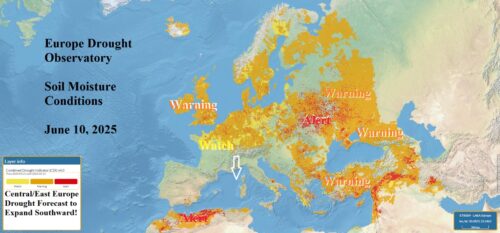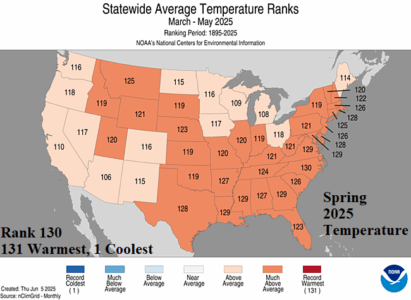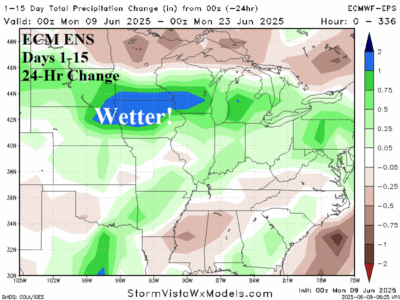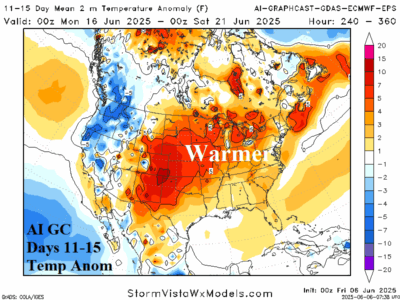06/11/2025, 4:44 am EDT
Marine heatwaves off Southwest Europe and in the Mediterranean Sea foreshadow amplified subtropical high-pressure ridging ahead as forecast for the remainder of June in Europe. The attendant weather is dry and hot and causes drought in Europe to strengthen and expand southward.




